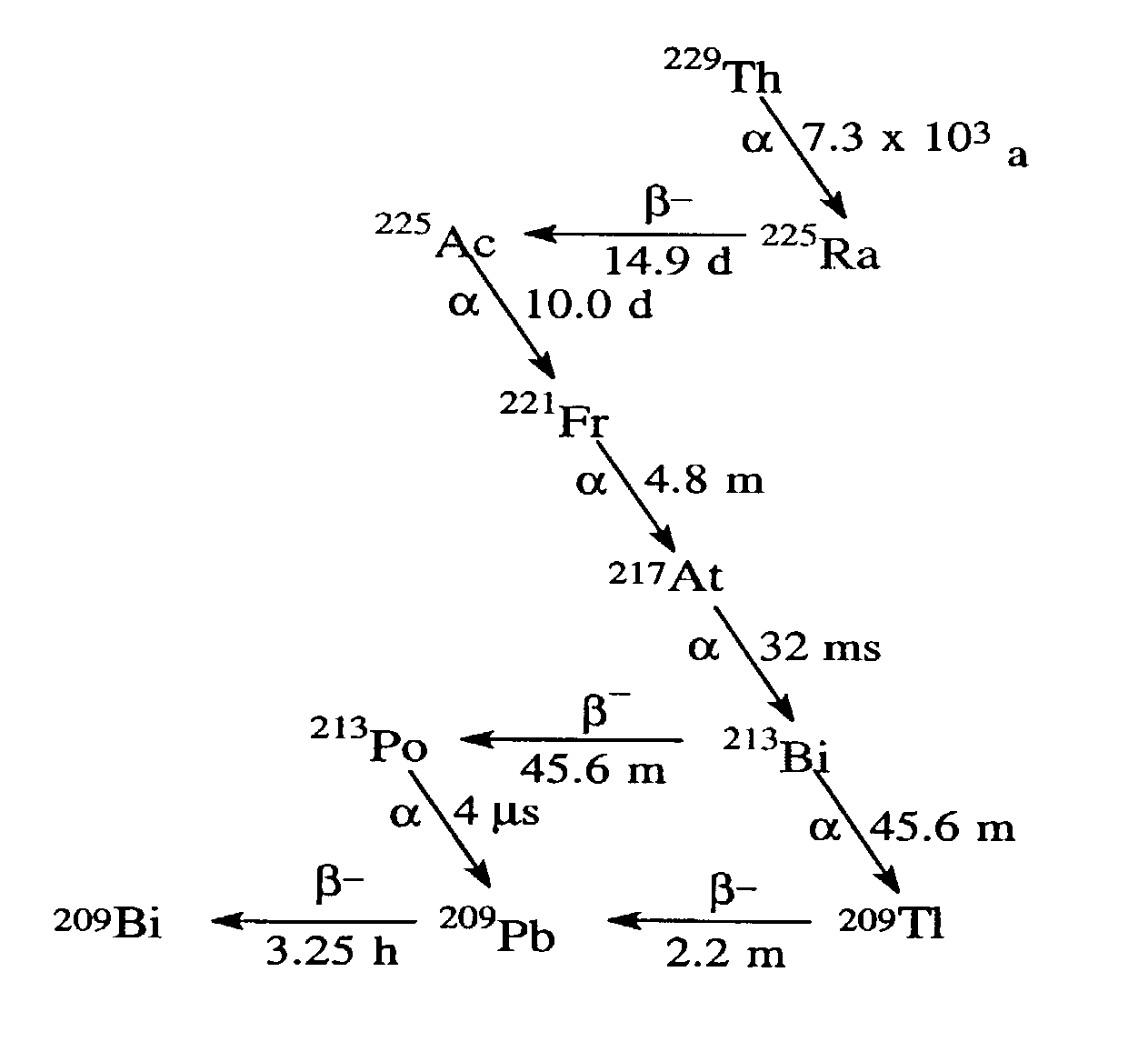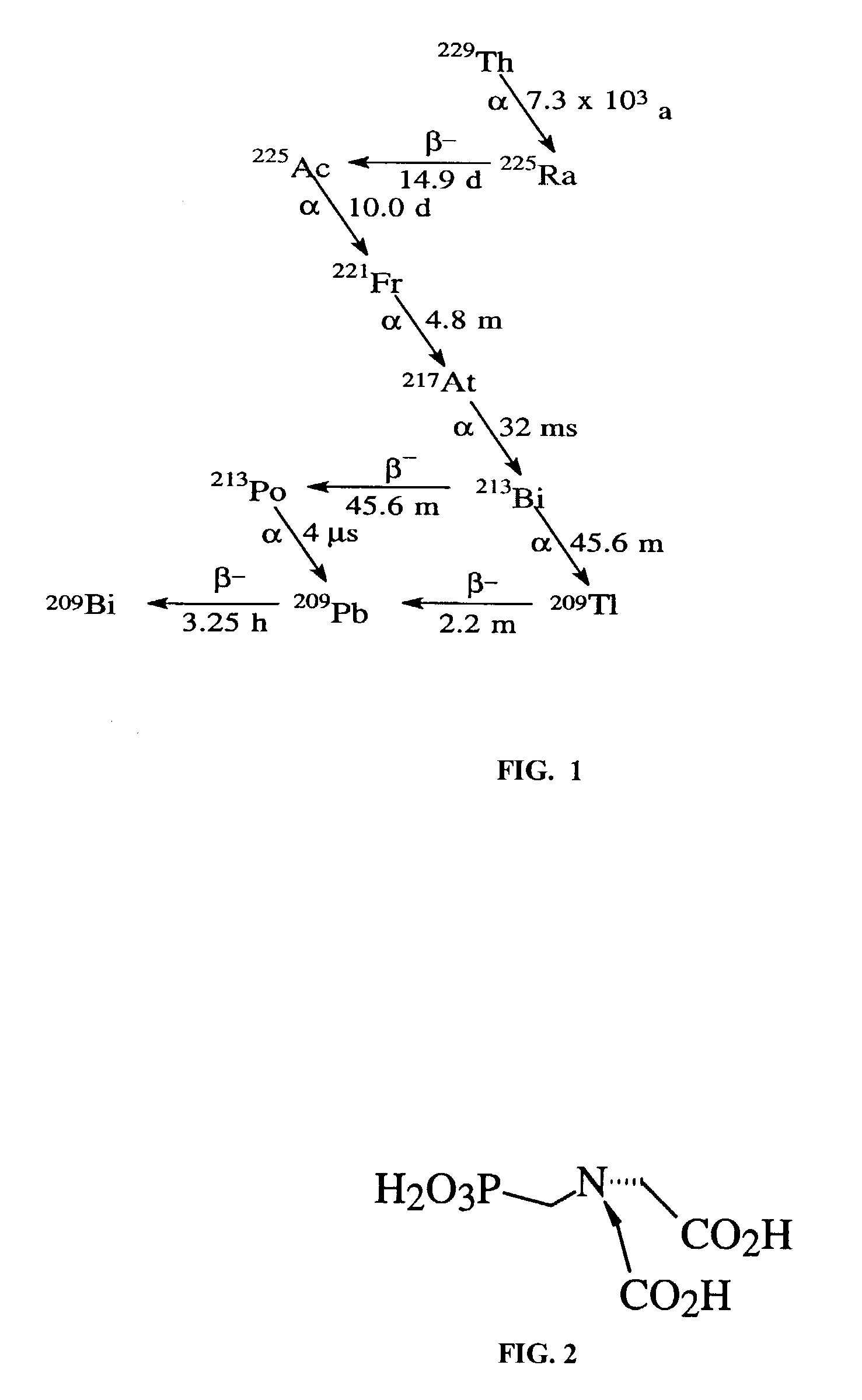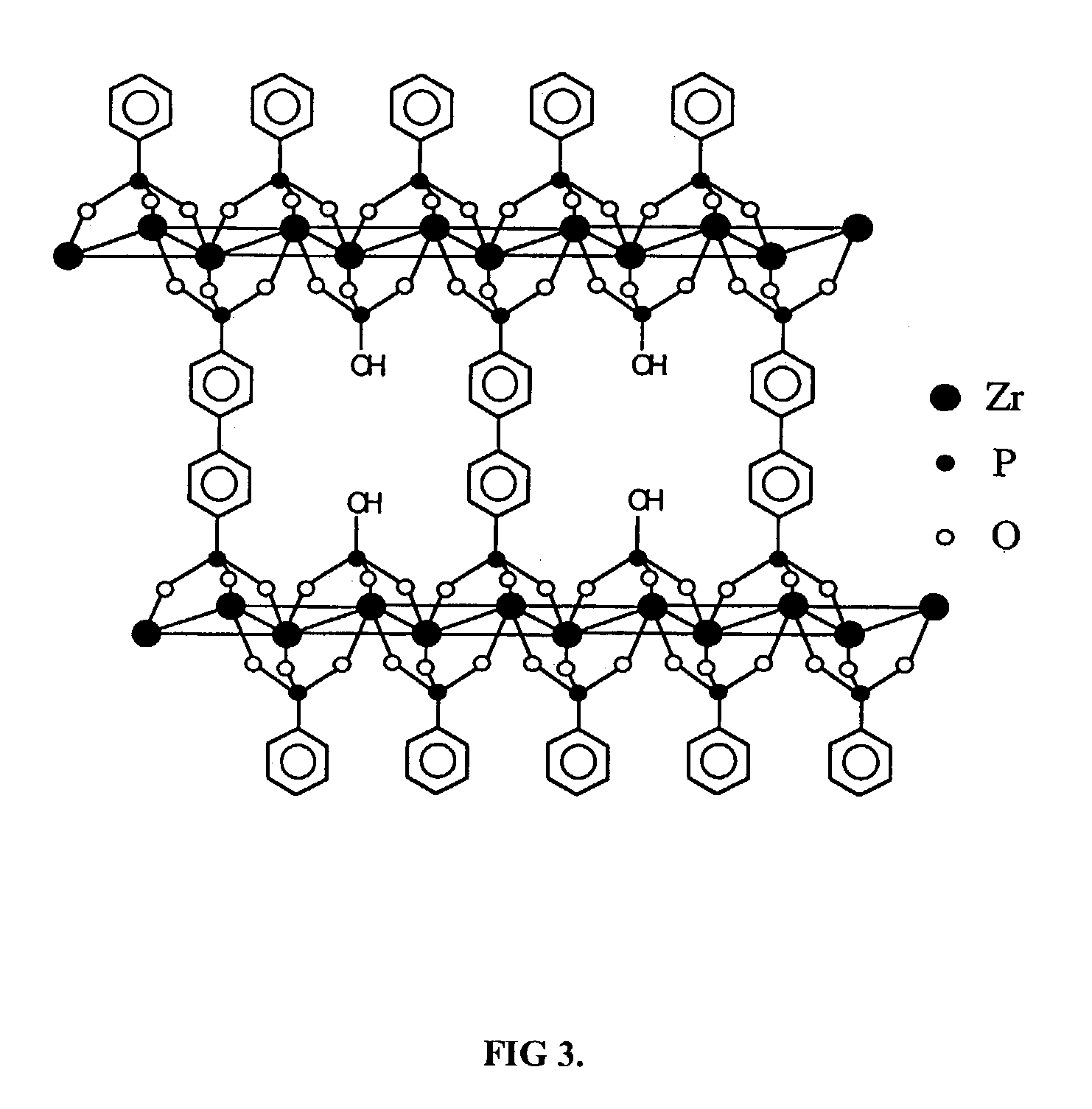Ion exchange materials for use in a 213Bi generator
- Summary
- Abstract
- Description
- Claims
- Application Information
AI Technical Summary
Benefits of technology
Problems solved by technology
Method used
Image
Examples
example 1
Synthesis of Zr (HPO4)xPMIDA(2−x).nH2O
[0022]Zirconium PMIDA derivatives have been shown to have a high affinity for polyvalent cations such as lanthanum, La3+, from weakly acidic media. Lanthanum ions will interact with the two carboxylic acid groups and may also interact with the lone pair of electrons associated with the nitrogen atom. The structure of PMIDA, N-Phosphonomethyliminodiacetic Acid, is shown in FIG. 2.
[0023]A series of zirconium PMIDA / phosphate materials with the general formula Zr[(PMIDA)x(HPO4)2−x].nH2O were synthesized where x varied from 0.2 to 1. A typical synthesis is described as follows. 1.33 g of PMIDA (10 mmol) and 0.48 mL of concentrated phosphoric acid (10 mmol) were dissolved in 10 mL of deionized water and 3.22 g of zirconyl chloride octahydrate (10 mmol) dissolved in 10 mL of deionized water was added drop wise with constant stirring. The resultant gel was then placed in a hydrothermal bomb with 2 mL of 48% HF and heated at 120° C. for 48 hours. The whi...
example 2
Zirconium 4,4′-Phenyldiphosphonic Acid (PDPA) Derivatives
[0024]Zirconium PDPA derivatives were prepared in a similar manner to the PMIDA derivatives described in Example 1 to produce a series of materials with the general formula Zr[(PDPA)x(HPO4)2−2x].nH2O, where x was varied from 0.1 to 0.5. These materials consisted of a layered structure permanently bridged by a phenyl group with HPO4 groups attached to each layer. The structure is similar to the BPBPA derivative shown in FIG. 3, except that the layers are separated by one phenyl group instead of two, thus limiting the access to the exchange sites on the phosphate groups to smaller ions. By varying the relative concentrations of phosphoric acid and PDPA in the starting mixture, it is possible to vary the density of the bridging PDPA moiety and thus vary the pore size and ion exchange properties of the final material. Since the PDPA is an inert bridging functionality, the ion exchange capacity of the material will be dependent upo...
example 3
Zirconium 4,4′Biphenylbis(phosphonic) Acid (BPBPA) Derivatives
[0025]The idealized structure of the zirconium phosphate / BPBPA derivatives is shown in FIG. 3. The BPBPA derivative serves to act as a rigid pillar, similar to the PDPA groups, separating the inorganic zirconium phosphate layers. Ion exchange reactions occur at the protons associated with the phosphate groups. As described previously for PDPA derivatives, varying the proportions of phosphoric acid and BPBPA in the reactant mixture will produce different ratios of pillars to phosphate groups in the final product leading to a range of pore sizes and ion exchange properties. The ion exchange capacity will also decrease as the BPBPA content increases. These materials were synthesized according to the procedure described in Example 2, using BPBPA in place of PDPA.
PUM
| Property | Measurement | Unit |
|---|---|---|
| Pressure | aaaaa | aaaaa |
| Pressure | aaaaa | aaaaa |
| Pressure | aaaaa | aaaaa |
Abstract
Description
Claims
Application Information
 Login to View More
Login to View More - R&D
- Intellectual Property
- Life Sciences
- Materials
- Tech Scout
- Unparalleled Data Quality
- Higher Quality Content
- 60% Fewer Hallucinations
Browse by: Latest US Patents, China's latest patents, Technical Efficacy Thesaurus, Application Domain, Technology Topic, Popular Technical Reports.
© 2025 PatSnap. All rights reserved.Legal|Privacy policy|Modern Slavery Act Transparency Statement|Sitemap|About US| Contact US: help@patsnap.com



